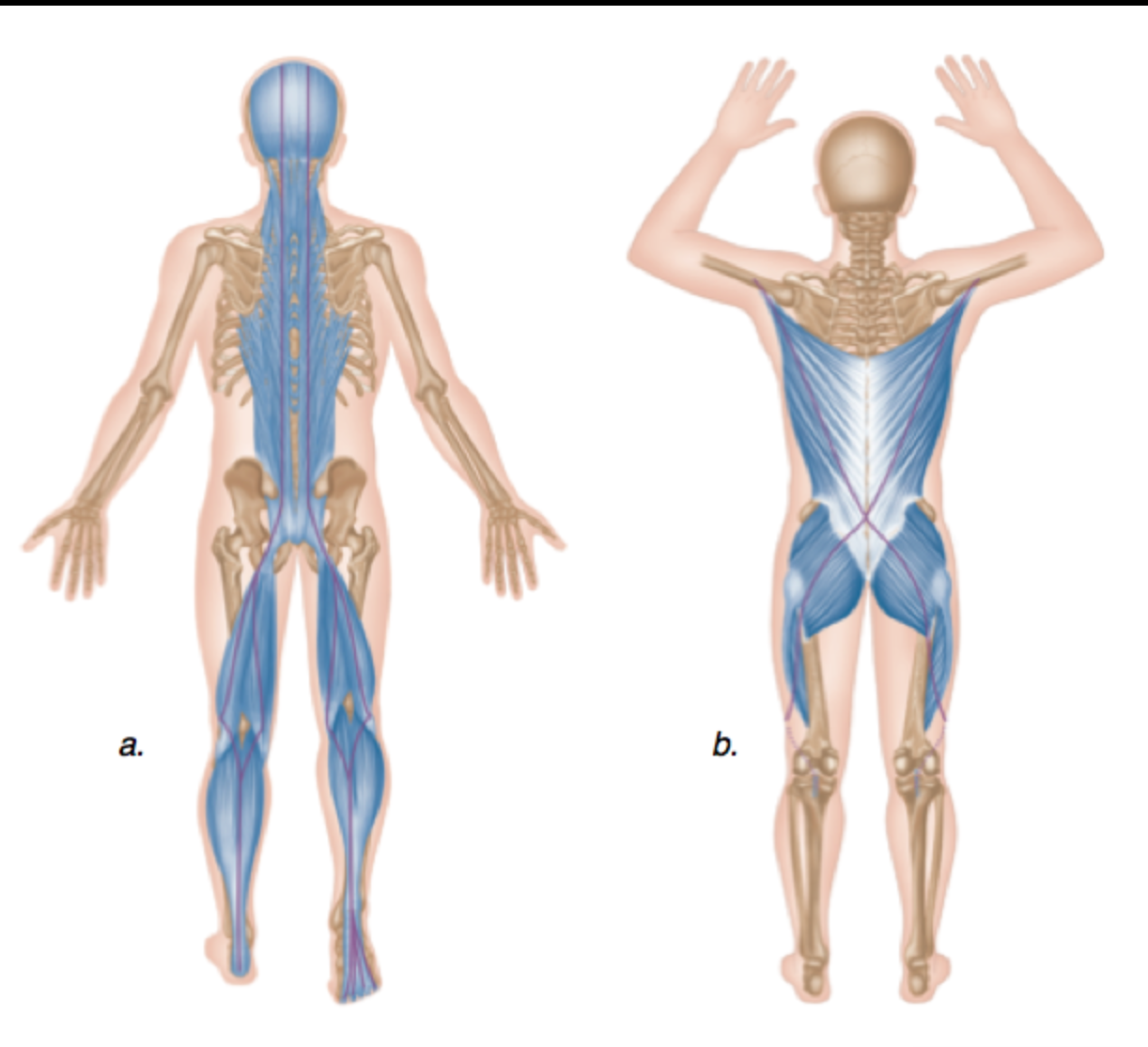Last week on the AdMac Fitness blog we spoke about kettlebells and the amazing exercise versatility they can offer us. In one section of the article we spoke about the posterior chain and how it can be trained really effectively using kettlebells.
In this article we’re going to look at the posterior chain in more detail, outlining what it is and how and why it should be trained. We’ll look at the implications of not training your posterior chain and how a strong posterior chain will benefit you both athletically and from an injury prevention standpoint.
The Posterior Chain
To refresh your memory, the posterior chain is the group of muscles that run up the back of the body, from the head to the heels. They are interconnected to form a chain of muscles responsible for posture, movement, force generation and stability.
The main muscles in the posterior chain are the calves, hamstrings, gluteals, erectors, lats, traps and rhomboids.
Many people, especially those new to fitness, will ignore their posterior chain in favour of training more aesthetically important muscles. To those who are seeking aesthetics, they may question why you’d spend so much time training muscles people aren’t bothered about - who is going to be impressed by big hamstrings?!
The answer lies in the structure and function of the posterior chain.
Posterior Chain and Injury Prevention
It has been well-known for years that exercise is an effective treatment option for lower back pain. However, more recent research has shown that specific posterior chain exercises are more effective than general exercise when it comes to dealing with back pain.
The research was a meta-analysis, reviewing multiple back pain studies and the results were clear - by strengthening the posterior chain, sufferers of back pain experienced a reduction in pain with fewer adverse effects than those using conventional general exercise as their treatment approach.
There’s also research that shows the importance of stretching the posterior chain muscles to prevent injury. In a study of 545 Navy servicemen, a lack of flexibility in the posterior chain was an effective predictor of lower back injury. This information builds on previous reports that we can’t ignore flexibility work when it comes to an injury prevention approach. We can make an evidence-based claim that strengthening and stretching the posterior chain will serve as an effective treatment option for existing back injuries, but even better, it’ll help to prevent them occurring in the first place.
Posterior Chain and Sporting Performance
The posterior chain is one of the areas of the body that helps to generate force, which is obvious important for sport. We know from the research that the kettlebell swing improves maximal and explosive strength, which is in part down to the effect it has on strengthening the posterior chain.
We also have research data from studies on CrossFit athletes. This is useful information because the demands of CrossFit are so varied - it’s designed to challenge all aspects of fitness.
What the research says is that posterior chain training should form part of the daily or weekly programming for CrossFit participants, because it helps with movement proficiency and injury prevention measures. We can largely ignore the CrossFit part of the conclusion and extrapolate those findings to a wider active audience. If posterior chain training will help people to move better and reduces injury susceptibility, then it’s a good thing regardless of your choice of sport or exercise. Essentially, all athletes and should be both strengthening and stretching their posterior chain as a matter of their daily programming.
How to Train the Posterior Chain
The posterior chain responds better to movement based training rather than isolation work. Perhaps this is because it’s a series of interconnected muscles rather than isolated ones, but from an anecdotal perspective we prefer deadlifts and swings to hamstring curls and calf raises. Essentially any movement with a hip hinge will help to train the posterior chain in some way. Here’s a good selection of posterior chain exercises for you to try…
Kettlebell swings - single arm, double arms or American
Deadlifts - Romanian, stiff legged, single leg and standard
Hyperextensions - ideally on a GHD
Hang Cleans
Farmers walk
Our suggestion is that you try these exercises with a variety of different weights, sets, reps and time spans. You’ll get the most out of your posterior chain training if you challenge it in different ways. True fitness means your body will be strong and adaptable, so if you only train it the same way you’ll only be developing a limited, one-dimensional fitness.
The other important point to remember when training your posterior chain is flexibility - you have to ensure you maintain a good level of flexibility and mobility by stretching. This not only allows you to exercise more effectively (you’ll be able to get into better positions, improving exercise technique), but you’ll also prevent injury through muscle tightness.
In conclusion, training your posterior chain regularly and effectively will help to prevent injury and will make you a fitter, stronger and more all-round athlete! Start doing it today…
If you’re looking for personal training in East London, get in touch!
At AdMac Fitness we’re not about fads, fashions and short term fixes. We want you to succeed properly over the long term, so with our help and advice you can get your fitness back on track! If you’d like us to help you, contact us on 07921465108 or email us at admacfitness@gmail.com. We look forward to hearing from you!


